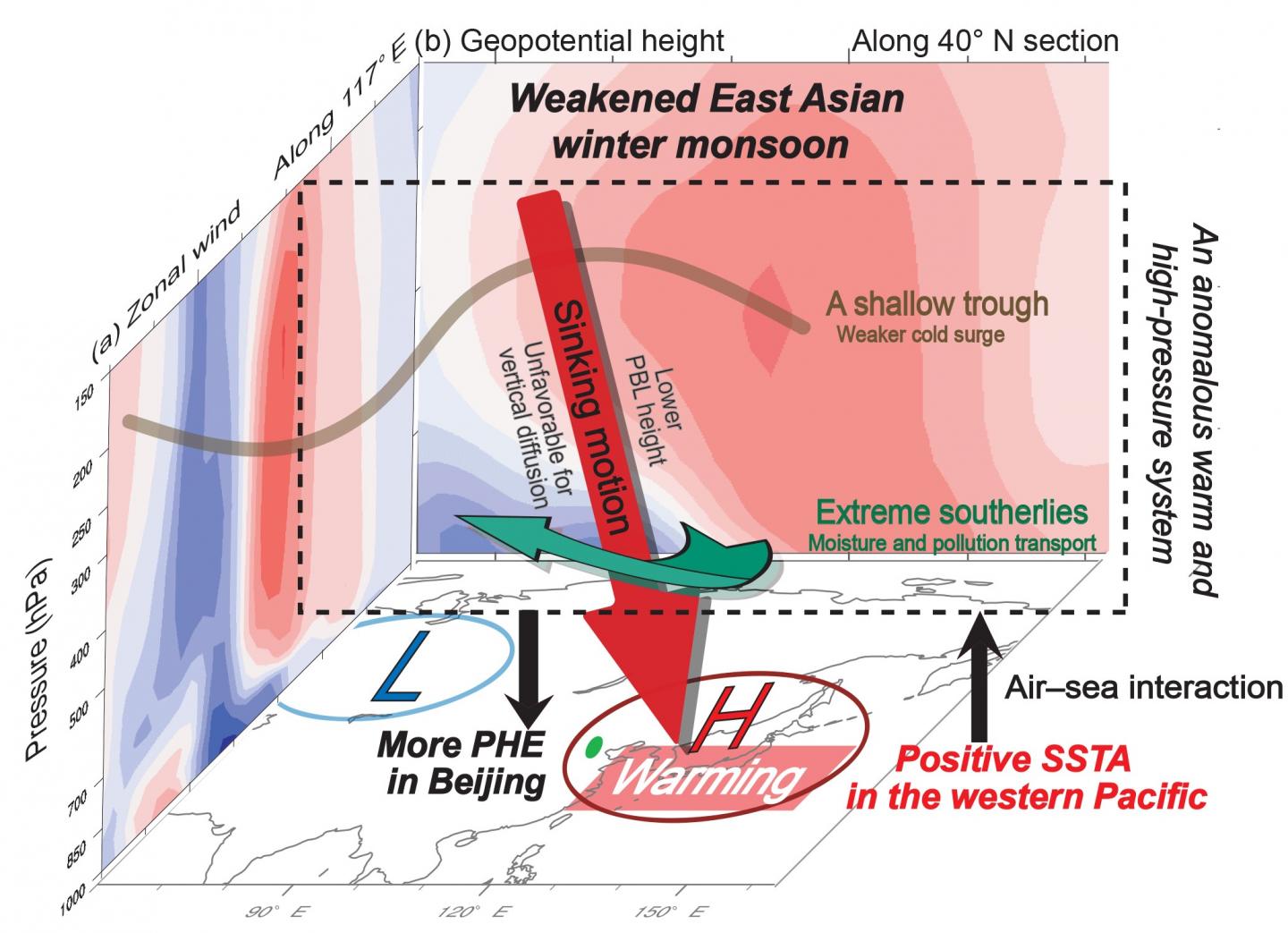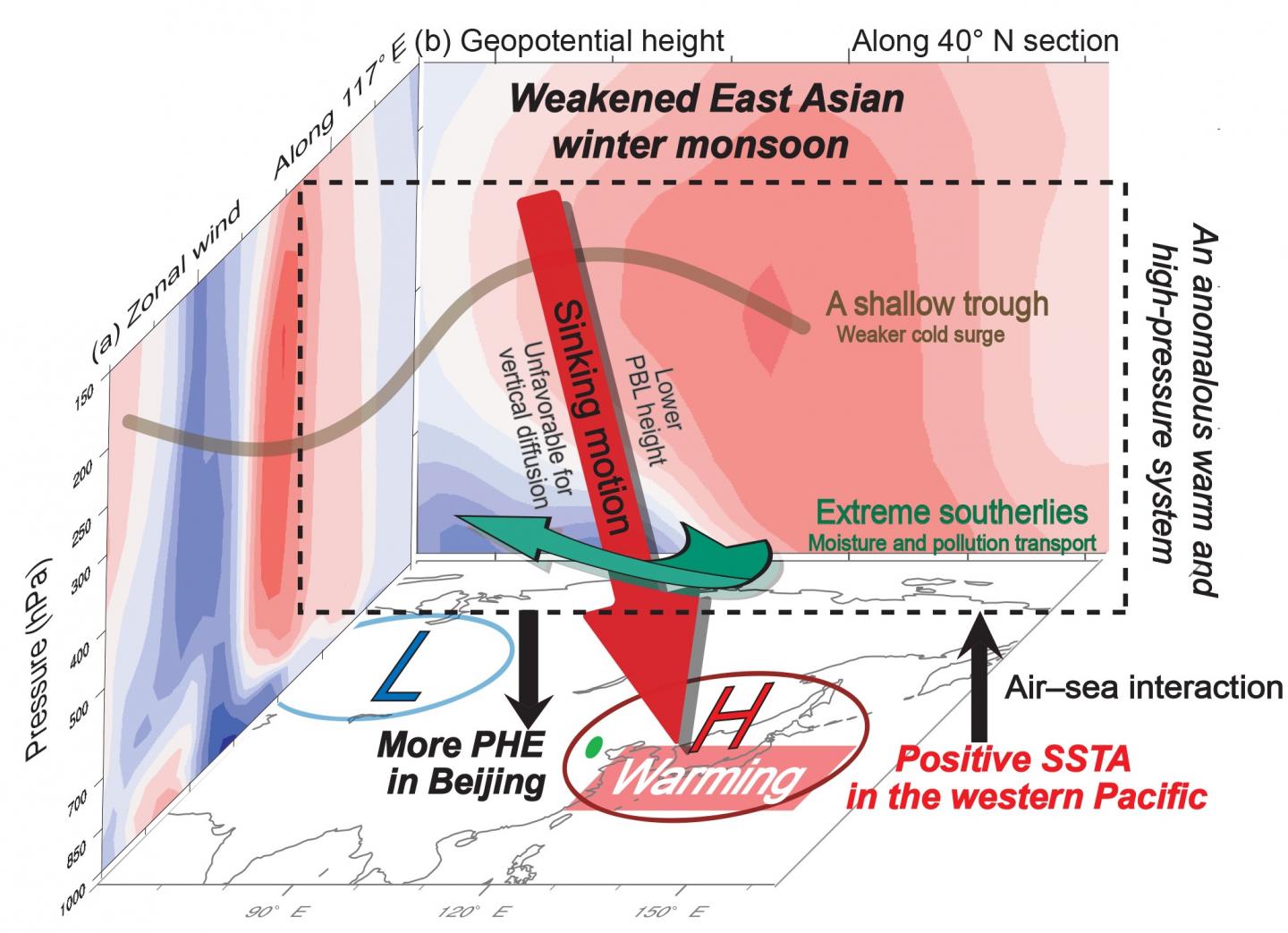
Credit: LIN PEI
Over the past decades, Beijing, the capital city of China, has encountered increasingly frequent persistent haze events (PHEs). Severe PHEs not only lead to a sharp decrease in visibility, causing traffic hazards and disruptions, and, hence, affecting economic activities, but also induce serious health problems such as respiratory illnesses and heart disease. While the increased pollutant emissions serve as the most important reason, changes in regional atmospheric circulation associated with large-scale climate warming are found to play a role as well.
A recent study published in Atmospheric Chemistry & Physics by Dr. PEI Lin at the Beijing Urban Meteorological Institute and Prof. YAN Zhongwei at the Institute of Atmospheric Physics Chinese Academy of Sciences and their colleagues demonstrated a significant positive trend of PHEs in Beijing for the winters from 1980 to 2016 and its close relationship to an increasing frequency of extreme anomalous southerly episodes in North China, as a result of a weakened East Asian winter monsoon (EAWM) system. They further pointed out that over the period 1900-2016, the EAWM index was significantly correlated with the sea surface temperature anomalies (SSTA) over the northwestern Pacific, which exhibited a wavy positive trend, with an enhanced positive phase since the mid-1980s.
"This paper reveals a new point of view for understanding the increasing PHEs in Beijing", said YAN. In fact, the results allowed scientists to depict a mechanism to explain how large-scale climatic warming could increase PHEs in Beijing via changes in the typical regional atmospheric circulations.
"It is crucial to take into account the impact of long-term climatic change on the regional atmospheric conditions when making efforts in controlling local air pollution such as PHEs in Beijing." Suggested YAN.
###
Media Contact
Zheng Lin
[email protected]
86-108-299-5053
@aasjournal
http://english.iap.cas.cn/
Original Source
http://english.iap.cas.cn/RE/201803/t20180315_190733.html http://dx.doi.org/10.5194/acp-18-3173-2018





